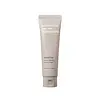What's inside
What's inside
 Key Ingredients
Key Ingredients

 Benefits
Benefits

 Concerns
Concerns

No concerns
 Ingredients Side-by-side
Ingredients Side-by-side

Water
Skin ConditioningKaolin
AbrasiveButylene Glycol
HumectantSilica
AbrasiveGlycerin
HumectantBentonite
AbsorbentCI 77891
Cosmetic Colorant1,2-Hexanediol
Skin ConditioningVolcanic Ash
AbrasiveMicrocrystalline Cellulose
AbsorbentOnsen-Sui
Xanthan Gum
EmulsifyingCellulose Gum
Emulsion StabilisingPropanediol
SolventDisodium EDTA
Ethylhexylglycerin
Skin ConditioningLactic Acid/Glycolic Acid Copolymer
Skin ConditioningGluconolactone
Skin ConditioningMadecassoside
AntioxidantLactic Acid
BufferingPolyquaternium-10
Tocopherol
AntioxidantWater, Kaolin, Butylene Glycol, Silica, Glycerin, Bentonite, CI 77891, 1,2-Hexanediol, Volcanic Ash, Microcrystalline Cellulose, Onsen-Sui, Xanthan Gum, Cellulose Gum, Propanediol, Disodium EDTA, Ethylhexylglycerin, Lactic Acid/Glycolic Acid Copolymer, Gluconolactone, Madecassoside, Lactic Acid, Polyquaternium-10, Tocopherol
 Reviews
Reviews

Ingredients Explained
These ingredients are found in both products.
Ingredients higher up in an ingredient list are typically present in a larger amount.
Bentonite is an aluminium phyllosilicate clay with great absorbent properties. The name 'bentonite' comes from the area where the largest source is found: Fort Benton, Wyoming.
As a clay, bentonite is often used to absorb excess oil and provide exfoliation. It has also been shown to have some antibacterial and anti-inflammatory properties. Studies show bentonite was effective at calming dermatitis from poison ivy and in diaper dermatitis of infants. Bentonite has also been shown to act as a barrier against toxic compounds on your skin.
Sunscreens containing bentonite display higher water resistance and stay on the skin for much longer. The sunscreens containing bentonite also show higher potency and UV light absorbtion.
Bentonite is naturally created from volcanic ash and several natural weathering/hydrothermal processes.
A common usage of bentonite is removing excess protein from white wines. Bentonite contains a property of being able to absorb large amounts of protein from aqueous solutions.
Phyllosilicate clay has a structure formed by sheets.
Learn more about Bentonite